First project gun. Need some advice.
42 posts
• Page 2 of 3 • 1, 2, 3
I know I didn't need to order the new parts but, being better safe than sorry. The cylinder head is broken so since I had the funds and oppertunity, I just ordered everything for it. The gears look to be in good condition so I left them alone.
-

AndyC - Grunt

- Team: N/A
- Posts: 96
- Age: 54
- Images: 14
- Joined: Tue May 10, 2011 6:14 pm
- Location: Red Bluff, California
If you mind me asking, what brand of parts did you buy?AndyC wrote:OK, ordered a new cylinder, cylinder head, nozzle, piston, piston head and a ballbaring spring guide. I'm gonna try this....first, anyone have a good tutorial page on how to grease all the gears/other parts and what type of grease/lube to use? Thanks much.
I've never seen a tutorial about how to grease an AEG, so here is mine:
Greasing an AEG is very important it quiets the noise inside the gearbox, lubricates parts, helps seals air from escaping and may even prolong the life of parts. You may or may not know that different greases are made for different purposes, gear grease isn’t made to seal air in and air seal grease isn’t made for lubricating fast moving parts that are under high stress. I use 3 different types of lubricants/grease in AEGs; gear grease, air seal grease (AKA vacuum grease) and piston lubricant. Whatever type of grease/ lubricant you use be sure it is safe on plastics before use as some grease/ lubricants especially those that have petroleum products (such as WD-40) can melt plastics.
Let’s start with gear grease; you want gear grease that is heavy enough so it will not be thrown out due to the centrifugal force when the gears spin but light enough so it can cover all the parts. This grease will be under high amounts of loads and speeds and may encounter high temperatures in high ROF AEGs. I use white lithium based all purpose grease available at most hardware stores, this grease is safe for plastics and has the consistency of brown mustard (NLGI No.-0 ). I bought mine from Lowes for $1.99 per 1.25 oz tube. It looks like this;
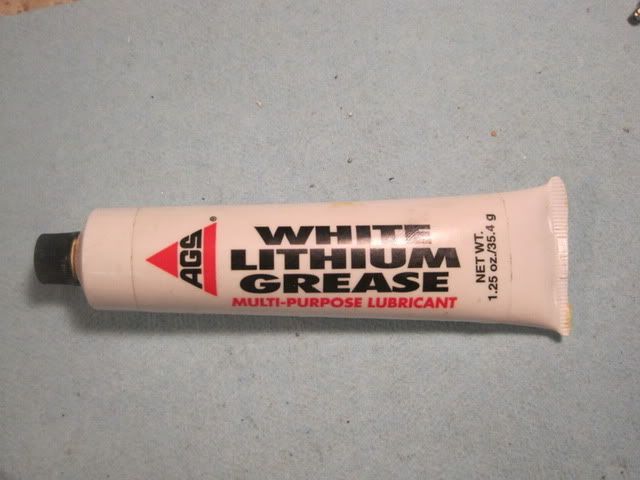
As for applying the gear grease, I start with underneath the spur gear (middle gear) I place 3 bb sized blobs in a triangular pattern. Like this;

Place the Spur gear on top, and turn it a few times to spread the grease around.

Place 3-4 bb sized blobs on top of the spur gear and then place the sector and bevel gears in their respected places and spin the gears a few times by hand to distribute the grease.
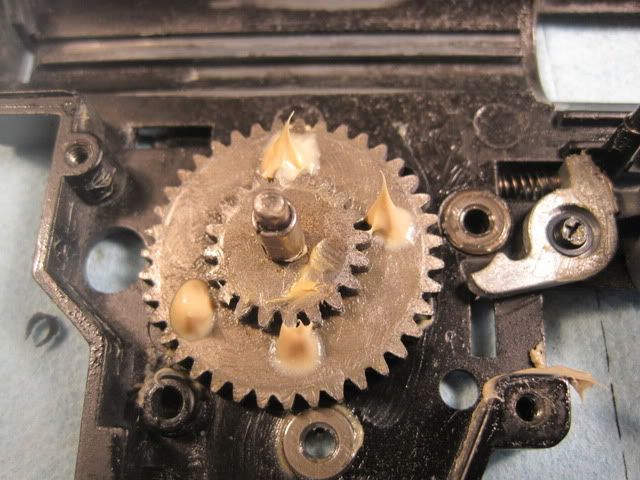
After installing all three gears I like to take a Q-tip and wipe the excesses grease off from the upper teeth (teeth that engage the piston) of the sector gear. If you skip this, eventually that grease will end up in the cylinder via the piston teeth making a mess.
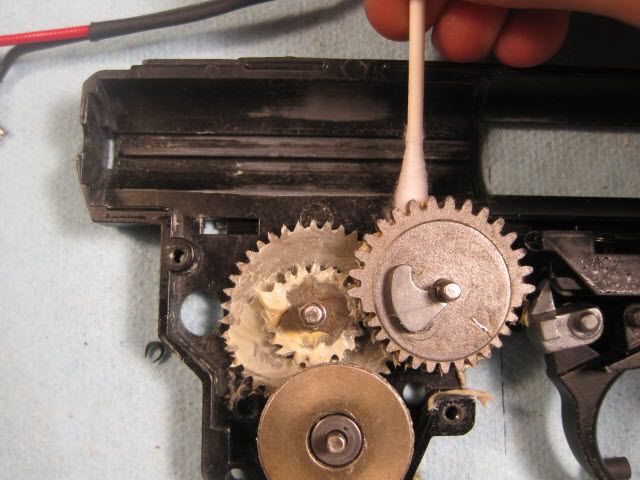
If you are using an all metal piston (such as the JBU all metal piston) I would recommend greasing both sides of the rails on both half’s of the gearbox. This will prevent a high pitch squealing sound from the metal rails rubbing on the gearbox.
*Note, after applying the grease wipe it down with a Q-tip so you don’t let excessive gear grease in the cylinder. If you skip this, it will make a mess!

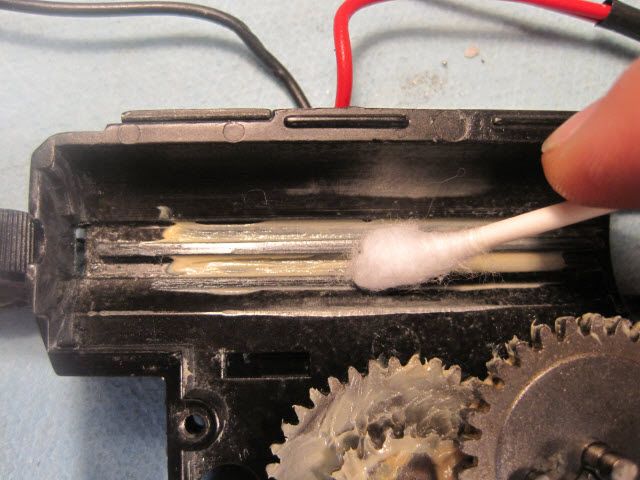
If you are using a metal toothed piston (and you really should) such as the Dream Army or SHS you will want to grease those teeth as well. Again be sure to wipe down the excessive gear grease on the teeth so it does not make a mess in the cylinder, I like to use my finger and then use a Q-tip to go between each tooth so there is barely any grease.
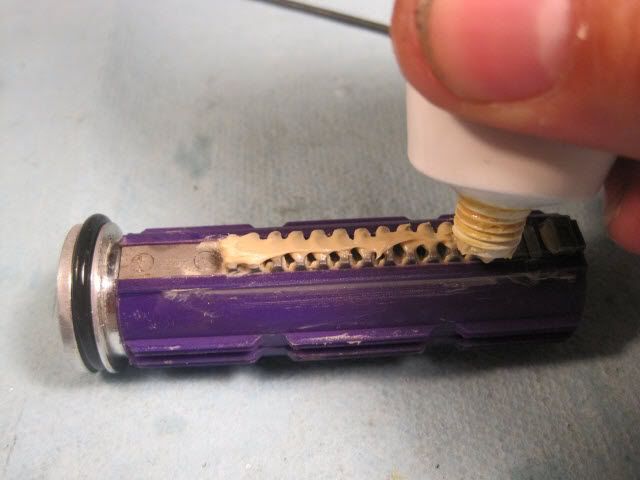
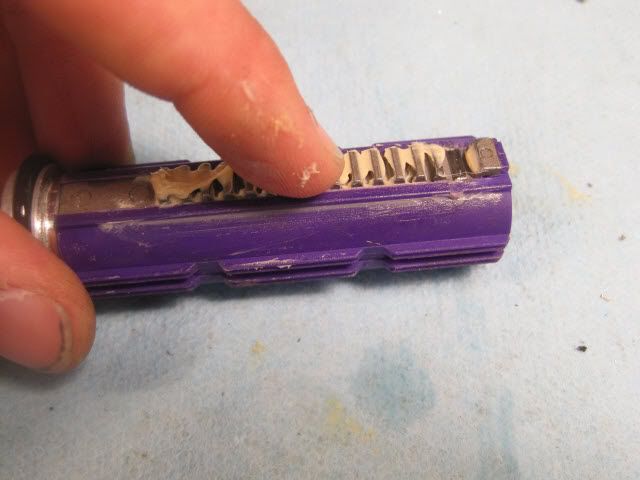
Now on to air seal grease (AKA vacuum grease), I mostly only use this in two places, the Hop up bucking/barrel and cylinder head/air nozzle. You want rather thick grease here because it needs to create an air seal but at the same time lubricate parts. My personal preference is a silicone based Dow Corning’s High Vacuum Grease 976V; it has a good sealing and lubricating ability and a consistence of silicone sealant. I can’t say where I got this particular tube at but you can buy 5.3oz tubes like this on Ebay.com for around $20-$30, there are also 2 oz> containers as well for around $10 with shipping included.
I like to put some in a small syringe for easier application.
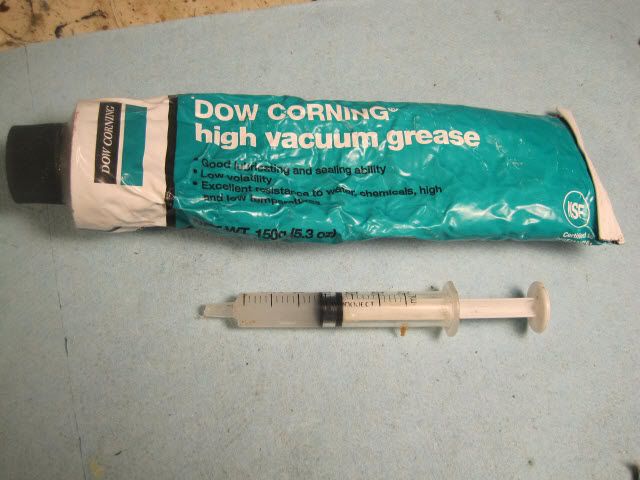
I mostly use this grease on the Cylinder head and air nozzle, I put 2-3 small BB sized blobs at about 1-2 MMs from the top.
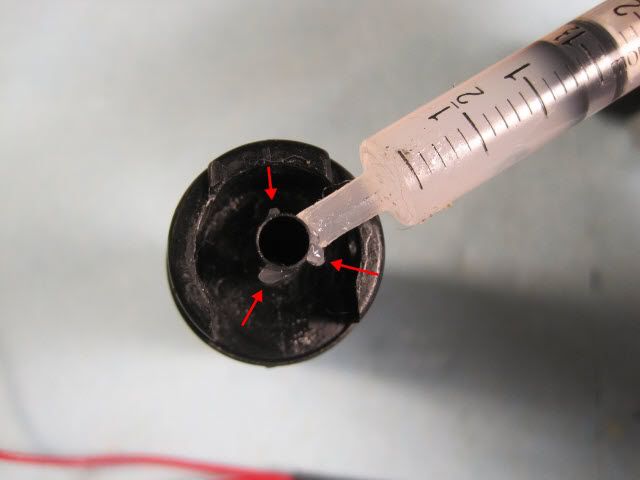
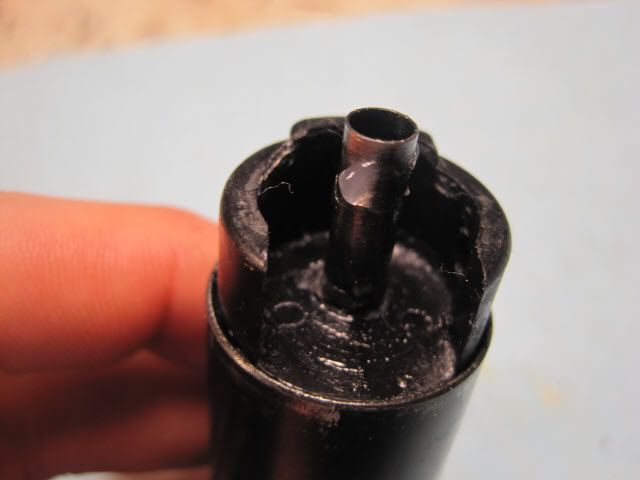
After applying the grease, work it in a little by putting the air nozzle on the cylinder head nozzle and using a twisting and up and down motion work it in.
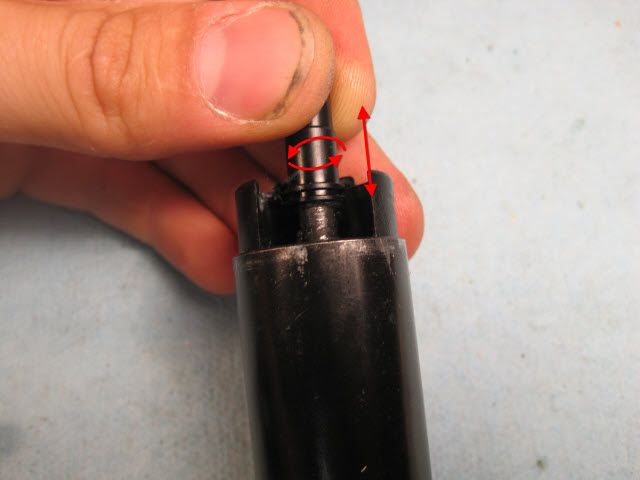
Now for the piston lubricant, I don’t always think lubricating the piston head O-ring is necessary. Only time I usually do this is when I replace the O-ring, about once or twice a year. As for what type of lubricate to use, some people like to use the above mentioned Vacuum Grease but I think it’s a little heavy for this type of application. You want a very light lubricant here as you want the piston to encounter as less friction as possible when moving forward. I prefer to use 100% pure silicon it is very much like the silicone found in aerosol silicone spray cans but is a much purer silicone as it does not have any additives or propellants. (Although believe it or not I’ve actually heard some people use KY personal lubricant too, but I have yet to try this.) Although I’m sure silicone spray will do just fine, I’m somewhat leery of the spray cans as some have too many additives which I don’t think are necessary. If you wish to use the spray cans, be sure it says “100% silicone”.
As for applying the lubricant, if you use the spray cans just use a few quick sprays on the piston head O-ring or you can do what I do and use a Q-tip to apply it all around the O-ring, the latter of which is IMO less messy.
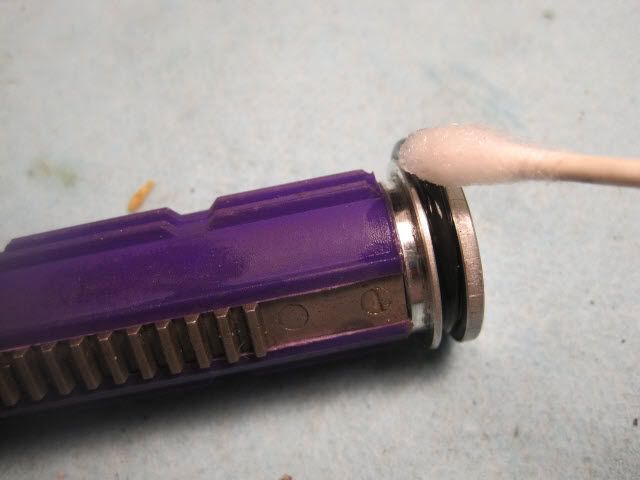
There's a difference between a person who has a screwdriver and a person who knows what they are doing.
-

Nec - Specops

- Team: N/A
- Posts: 1634
- Age: 35
- Joined: Sat Mar 15, 2008 7:33 pm
- Location: Renton, Washington
Make sure to get the little fuzzies off the Q-Tip first or else they will stick in your gearbox. I don't think it's too big of a deal, but I don't take the chance.
"I have the cutest dog."
-

Switchback - 1337

- Team: N/A
- Posts: 2105
- Age: 29
- Images: 7
- Joined: Mon Jul 27, 2009 3:37 pm
- Location: Washington
EXCELLENT. Should be stickied!
The parts I purchased may not be the best but for the $$ I had -
Element M4 Bore-Up Kit.

Element Full Steel-Tooth Piston.

Element V2 Ball Bearing Spring Guide.

I'll be heading to the hardware store tonight to stock up on lithium grease. Thanks a ton for the tutorial! I think I can really do this.
The parts I purchased may not be the best but for the $$ I had -
Element M4 Bore-Up Kit.

Element Full Steel-Tooth Piston.

Element V2 Ball Bearing Spring Guide.

I'll be heading to the hardware store tonight to stock up on lithium grease. Thanks a ton for the tutorial! I think I can really do this.
-

AndyC - Grunt

- Team: N/A
- Posts: 96
- Age: 54
- Images: 14
- Joined: Tue May 10, 2011 6:14 pm
- Location: Red Bluff, California
AndyC, great choice on parts.
I've never used a bore up kit before but a friend of mine had one and it made his gun quieter. Let me know how it goes.
The spring guide is a good choice, I've used the element spring guides before.
A friend of mine (Hollen on TAC forums) has used the Element metal tooth pistons before although didn't quite look like the one you pictured but non the less, it seemed to hold up good but IMO you should have gotten the SHS 14 metal tooth Piston or the Dream Army metal tooth piston their cheaper and the tooth racks don't tend to bend as much.
I've never used a bore up kit before but a friend of mine had one and it made his gun quieter. Let me know how it goes.
The spring guide is a good choice, I've used the element spring guides before.
A friend of mine (Hollen on TAC forums) has used the Element metal tooth pistons before although didn't quite look like the one you pictured but non the less, it seemed to hold up good but IMO you should have gotten the SHS 14 metal tooth Piston or the Dream Army metal tooth piston their cheaper and the tooth racks don't tend to bend as much.
There's a difference between a person who has a screwdriver and a person who knows what they are doing.
-

Nec - Specops

- Team: N/A
- Posts: 1634
- Age: 35
- Joined: Sat Mar 15, 2008 7:33 pm
- Location: Renton, Washington
OK, I'll look into a better piston then. One thing that is concerning me is the air nozzle with the bore-up kit. It looks plastic and the item description doesn't state anything. Should I be using a metal nozzle?
-

AndyC - Grunt

- Team: N/A
- Posts: 96
- Age: 54
- Images: 14
- Joined: Tue May 10, 2011 6:14 pm
- Location: Red Bluff, California
-

Switchback - 1337

- Team: N/A
- Posts: 2105
- Age: 29
- Images: 7
- Joined: Mon Jul 27, 2009 3:37 pm
- Location: Washington
Don't get me wrong the piston you bought should be fine, just suggesting a better one. You should use the one you bought before buying another.AndyC wrote:OK, I'll look into a better piston then. One thing that is concerning me is the air nozzle with the bore-up kit. It looks plastic and the item description doesn't state anything. Should I be using a metal nozzle?
It doesn't matter if the air nozzle is metal or not it's the length you should be more worried about. Metal air nozzles tend to give a slightly better seal but that's not to say plastic air nozzles are bad infact I prefer them in most cases because they are easier to shave if their too long. I don't think you should worry about the air nozzle length or material right now.
There's a difference between a person who has a screwdriver and a person who knows what they are doing.
-

Nec - Specops

- Team: N/A
- Posts: 1634
- Age: 35
- Joined: Sat Mar 15, 2008 7:33 pm
- Location: Renton, Washington
I'd just like to interject here. That particular model of gun is notoriously Shit. The gearboxes are not machined properly and they have a very high return rate. Points of concern so far as I've seen them.
Anti reversal latch, tappet plate, the whole gearbox not lining up properly for the gears to turn properly. Are just a few of the main concerns. Adding your issue. The cylinder head is flimsy.
Honestly you picked one of the worst possible guns to take on as a project. you are going to wind up replacing the entirety of the gearbox to get it to work well.
Anti reversal latch, tappet plate, the whole gearbox not lining up properly for the gears to turn properly. Are just a few of the main concerns. Adding your issue. The cylinder head is flimsy.
Honestly you picked one of the worst possible guns to take on as a project. you are going to wind up replacing the entirety of the gearbox to get it to work well.
motherlover.
-

BlacksunshineGAAS - Soldier

- Team: N/A
- Posts: 188
- Age: 47
- Joined: Thu Jan 13, 2011 11:26 am
- Location: Seattle area
This problem sound somewhat familiar... My friend was at my hoise and we where shooting our guns, i had just got some new BBs and his gun(Echo 1 M4) did the same thing, the problem with his was the magazine, it didnt feed properly... It sounds like a entrily different cause; i dont have much expereince with the interns of AEGS... oh well though...
- Fatjogger24
- Grunt

- Team: N/A
- Posts: 83
- Age: 35
- Joined: Sun Jun 12, 2011 7:48 pm
- Location: Seattle Washington
are you new?! you seem to have entirely missed the OP's pictures of his broken internal. Refrain from offering people help if you yourself don't know shit about shit!
-

PanzerFaust - 1337

- Team: N/A
- Posts: 7697
- Age: 44
- Images: 3
- Joined: Mon Dec 27, 2004 1:05 am
- Location: Beaverton/Aloha
BlacksunshineGAAS, I’ve worked on the Matrix Challenge kit before. IMO I didn’t think they were as bad as what you’re describing, they had a few issue but nothing real major I found.BlacksunshineGAAS wrote:I'd just like to interject here. That particular model of gun is notoriously Shit. The gearboxes are not machined properly and they have a very high return rate. Points of concern so far as I've seen them.
Anti reversal latch, tappet plate, the whole gearbox not lining up properly for the gears to turn properly. Are just a few of the main concerns. Adding your issue. The cylinder head is flimsy.
Honestly you picked one of the worst possible guns to take on as a project. you are going to wind up replacing the entirety of the gearbox to get it to work well.
The Matrix Challenge kit is a AIM TOP rebrand as “AIM” is branded all over the gun, personally I’ve only worked on one of these guns so the long term reliability is still unknown in my books.
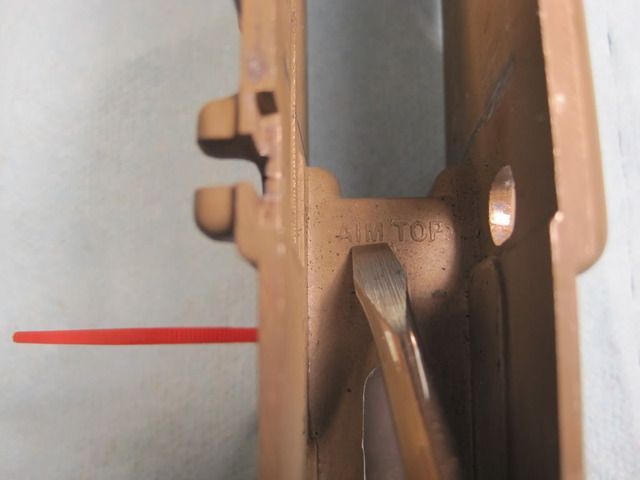
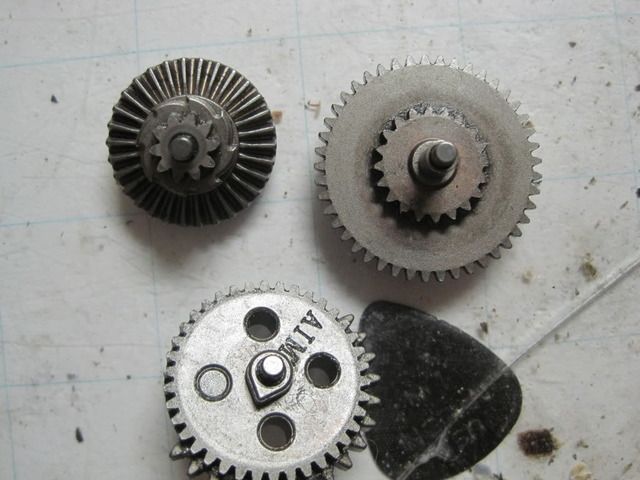
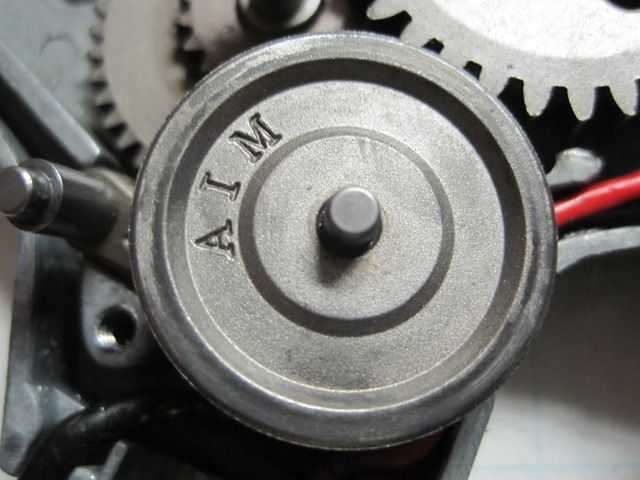

If this be true that the gun you have AndyC, is indeed a Matrix Challenge kit a type of gun I’ve worked on in the past. I would say you’re on the right track, Compression was good out of the box, but worked on the gun with a small chip in the air nozzle and the spur gear and bevel gear were both destroyed due to bad shimming on the owners fault. Honestly I would use the AIM TOP piston that came with the gun; it’s a much better piston than the Element Full tooth piston.
The motor that comes with the gun that has a turkey shit green case with a red bell (picture below) is a subpar stock motor, if you want to do any type of ROF or FPS (spring upgrade) upgrade you’ll want to get a better motor.
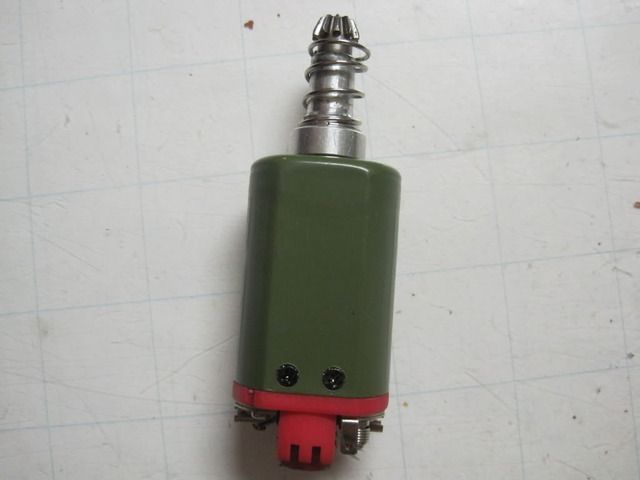
My suggestion if you like high ROF and great Trigger response get the Dream Army (or the SHS equivalent), $30 (with shipping included) buys you an excellent motor that easily does 30+ RPS with m120 spring on a 7.4v lipo! Something The G&P Devil Jet m170 motor I test achieved with an 11.1v with lacking trigger response!
*Sorry for the huge pictures this time, didn’t have time to resize them.
There's a difference between a person who has a screwdriver and a person who knows what they are doing.
-

Nec - Specops

- Team: N/A
- Posts: 1634
- Age: 35
- Joined: Sat Mar 15, 2008 7:33 pm
- Location: Renton, Washington
OK. Nec - I opened the gearbox and here is what it looks like. It's the same as in the pics you posted -





So yeah, same rifle. The new parts should be here this week. I'll be sure to take progress pics also.





So yeah, same rifle. The new parts should be here this week. I'll be sure to take progress pics also.
-

AndyC - Grunt

- Team: N/A
- Posts: 96
- Age: 54
- Images: 14
- Joined: Tue May 10, 2011 6:14 pm
- Location: Red Bluff, California
42 posts
• Page 2 of 3 • 1, 2, 3
Who is online
Users browsing this forum: No registered users and 1 guest